The Magical Red Spider Lilies of Kinchakuda
Get A Close-Up View Of This Other-Worldy Japanese Blossom
Greet autumn by strolling through mystical riverside paths ablaze with spider lilies.
Summer’s grip has loosened, the days are shorter and soon the red spider lily will bloom, heralding the arrival of autumn. Chances are, you’ve never seen this peculiar flower. In Tokyo you might spot a few, but the best place in Japan to see them is growing en masse at Manjushage Park in Hidaka City, Saitama Prefecture. For two weeks a year, this riverside plain transforms into an enchanted forest, carpeted by 500,000 flaming red spider lilies!
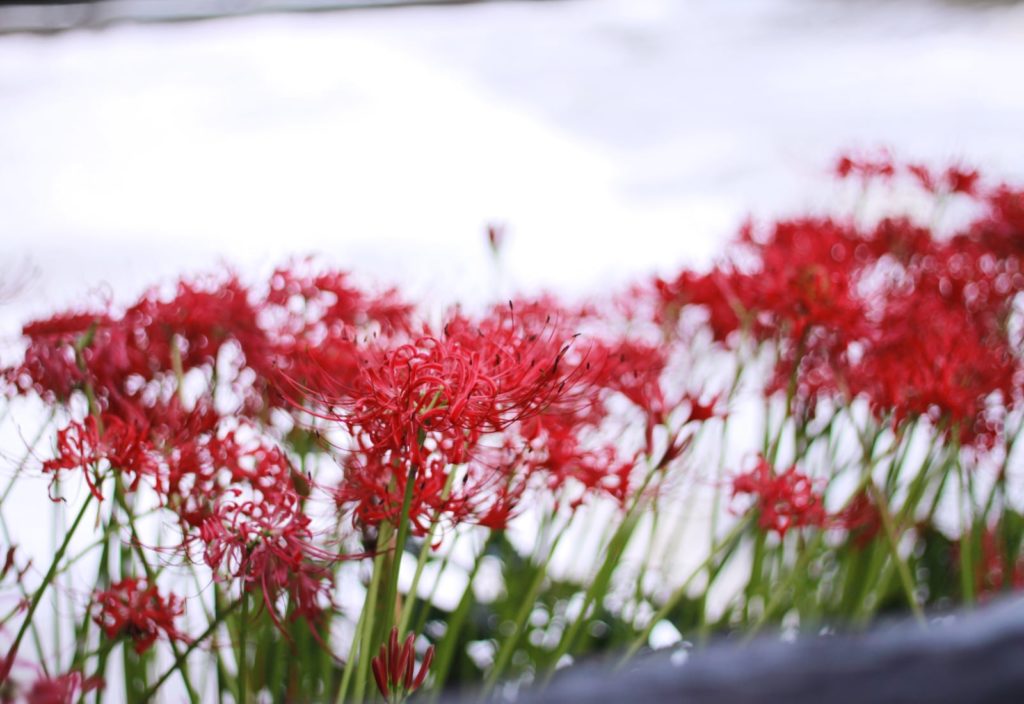
The red spider lilies of Kinchakuda were discovered growing wild on fields left fallow during a land dispute. It’s thought the meandering Koma River washed the bulbs onto the riverbanks.
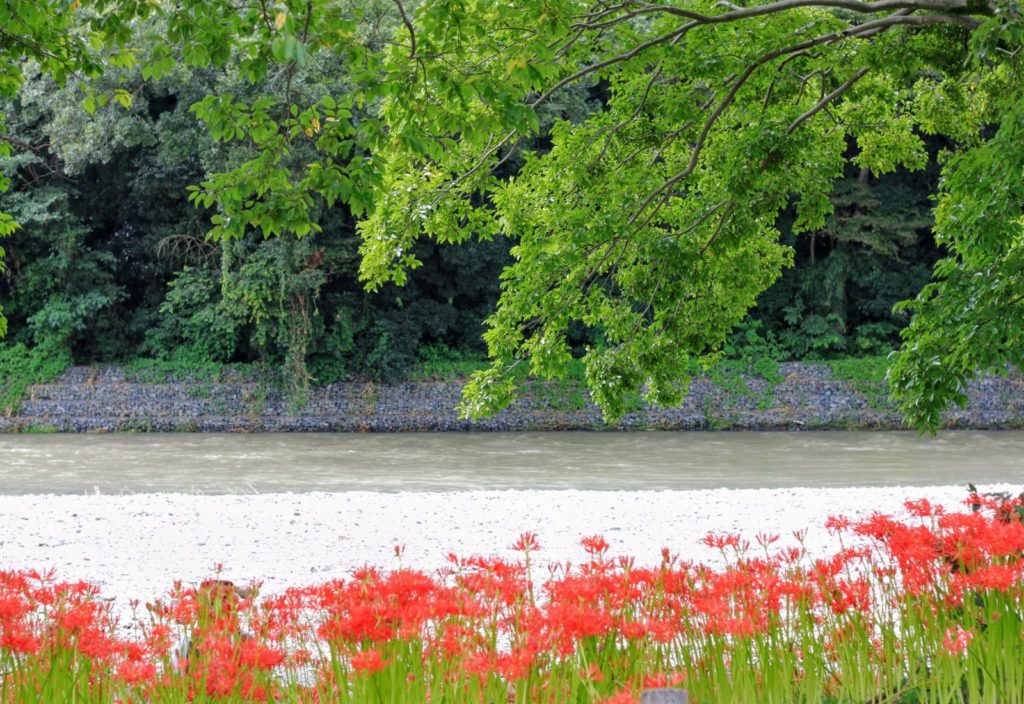
It is believed that the river carried the bulbs to where they grow today, during a period when a local land dispute had left the area to fall fallow and become overgrown.
The fame of the site grew and in 2017, Emperor Emeritus Akihito and Empress emerita Michiko paid Kinchakuda a much-feted visit. And no wonder—the effect of these tall, red flowers blooming to the horizon is glorious! The absence of leaves intensifies the deep scarlet and you wander along Manjushage Park feeling like a royal, on your own magical red carpet.
What’s in a Name?
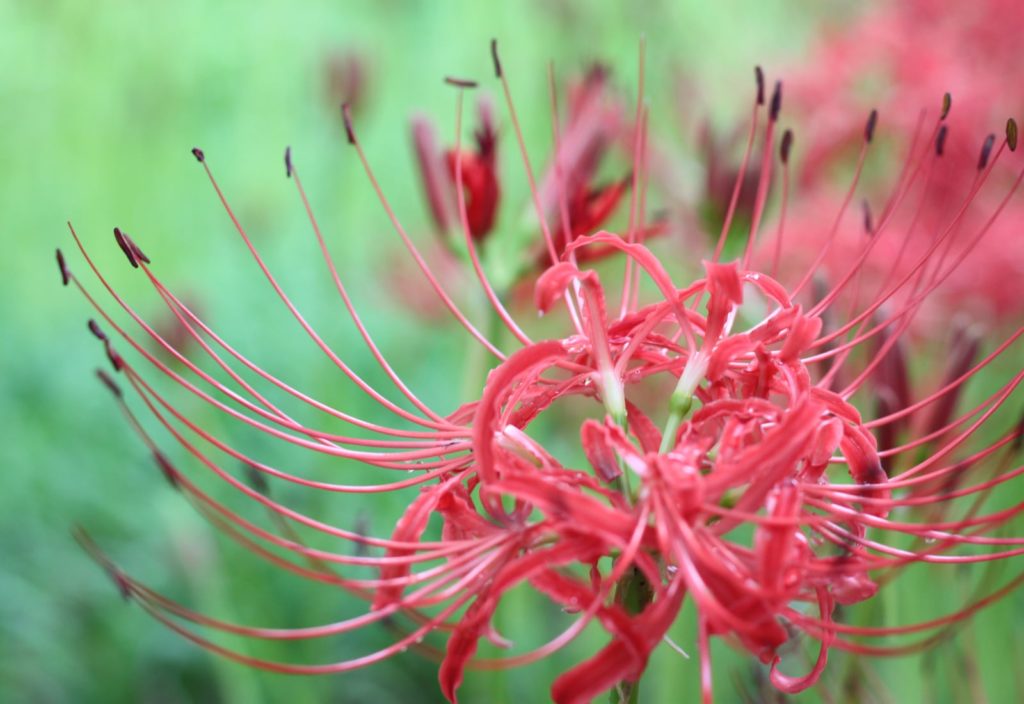
The red spider lily (lycoris radiata) has a myriad of common names. Native to China, Korea, Japan, and Nepal, the name was adopted into Japanese as manjushage from the sanskrit word meaning “flower of the heavens”. In Japan, they are also called higanbana, literally “equinox flower” as they bloom around the autumnal equinox each year.
Many sad tales surround these flowers. One legend is that the lilies were brought to Japan by early Christian missionaries, many of whom died from sickness or persecution, planting the lilies to mark the roads they had taken. As the blooms coincide with the Buddist tradition of visiting graves at the equinox, the appearance of the flowers for many is bittersweet.
Ancient Korean Origins
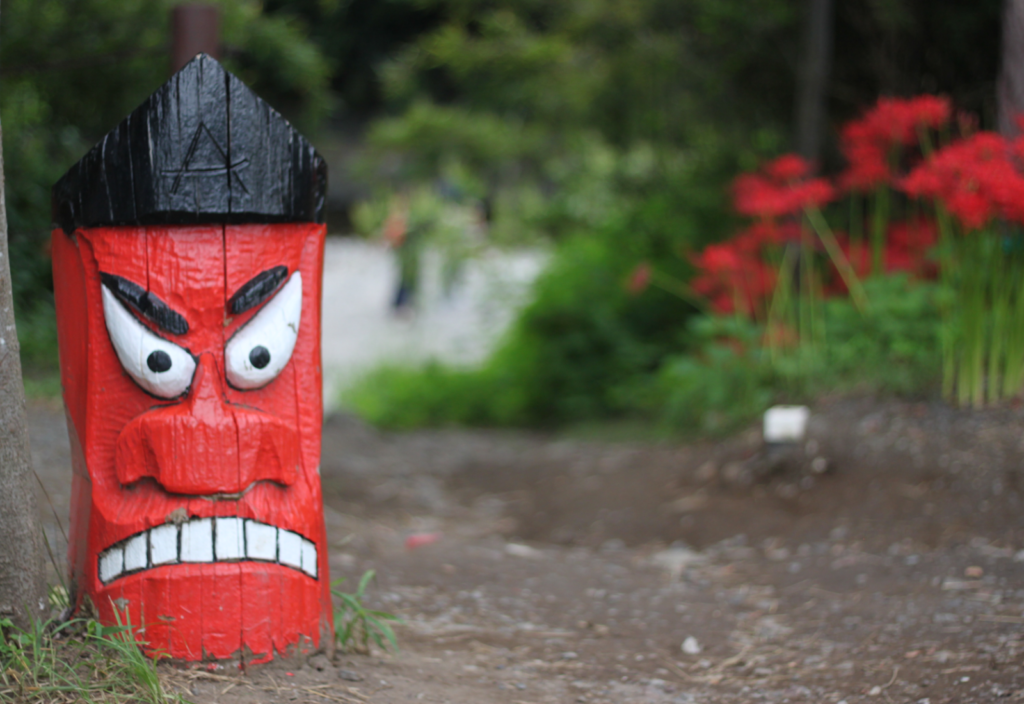
Jangseung are Korean wooden totem poles that marked village boundaries and protected them from evil.
Migration to this area from the ancient Korean kingdom of Goguryeo began in 668 when the king sent his son to Japan to garner support to overthrow a Chinese invasion.
But that never happened and some 1,800 refugees eventually resettled on the Musashino plains in 716, in present-day Saitama and Kanagawa. This link to the past is proudly on display in Kinchakuda and its surrounds, where visitors are greeted by pairs of jangseung—Korean wooden totem poles, placed to mark village boundaries and protect against evil.
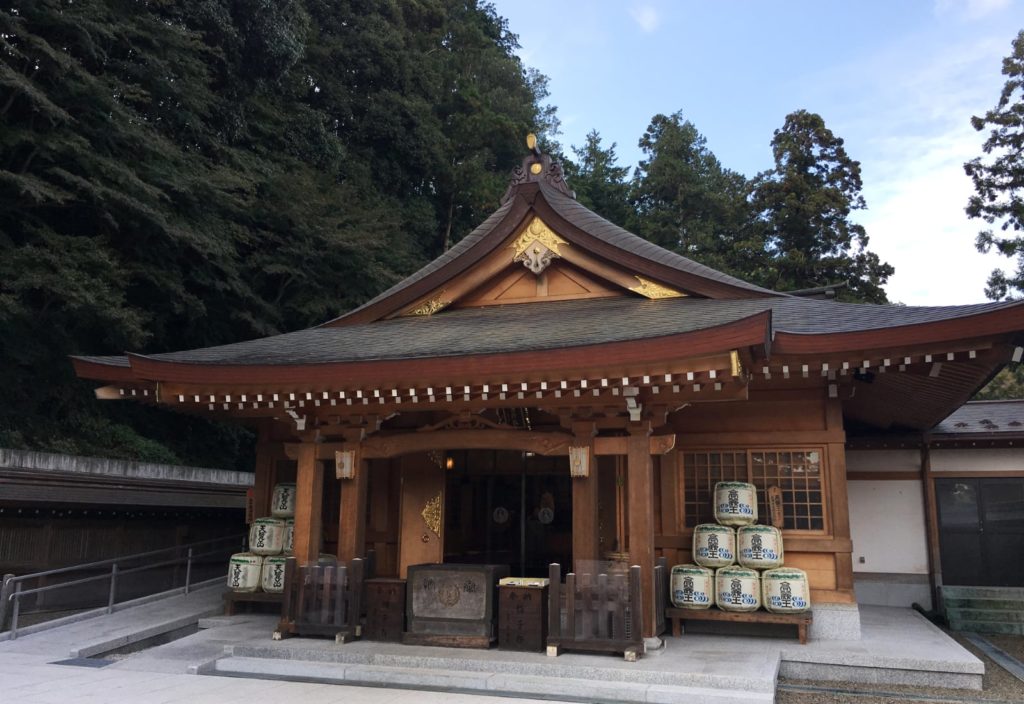
Koma Shrine is nearby the area where the Kinchakuda Red Spider Lily Festival is held.
A 30-minute walk from Kinchakuda, more ancient links are found at Koma Shrine where the Korean king’s son, called Jakko in Japanese, was enshrined after his death. The shrine eventually became a symbol of friendship between the two nations. If you’re a history buff, don’t miss Komake Jutaku—just behind Koma Shrine—the 17th-century thatched-roof house inhabited by generations of priests.
Lofty View of the Spider Lilies
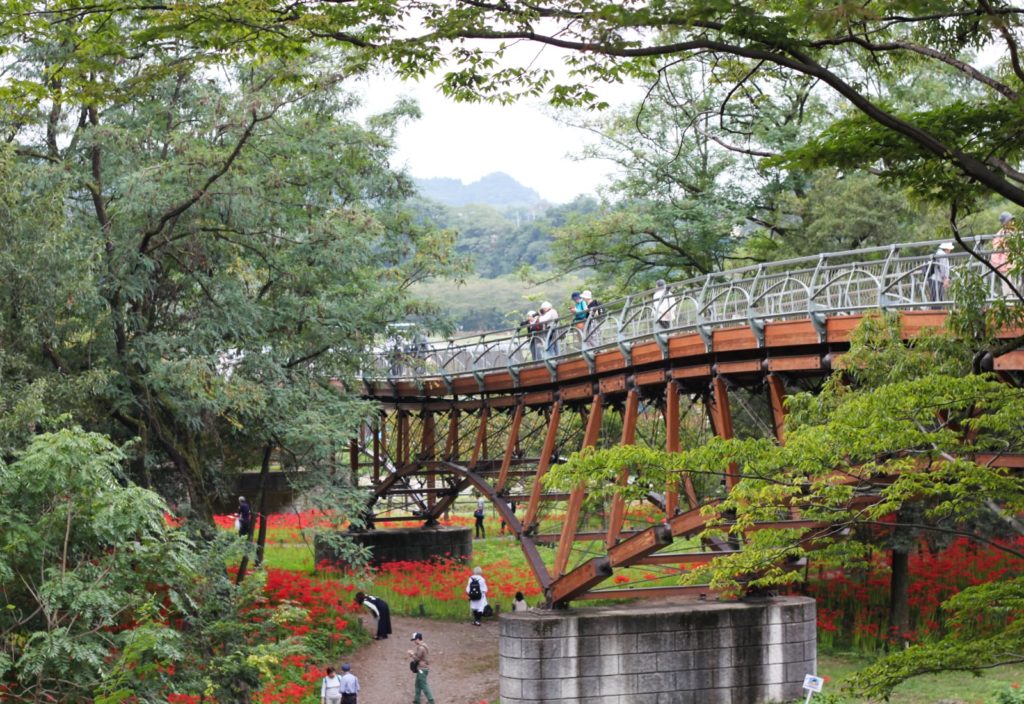
Aiai Bridge: The unbeatable spot for spider lily viewing.
My favorite place to admire the spider lilies from is the Aiai Bridge. Here’s my route:
- From Koma Station, cross the first bridge 鹿台橋 (Rokudaibashi)
- Continue straight past Alishan Organic Center’s distinctive red barn (make sure to loop back there for delicious vegetarian food on your way home!)
- Follow straight down the road, stopping in to visit Komago Old Traditional House on your left
- Cross a second bridge 天神橋 (Tenjinbashi)
- Take the crossing back to the right-hand side of the road
- Head up the hill to your right following the signs for あいあい橋 (Aiaibashi)
 The Aiai Bridge is an award-winning wooden pedestrian bridge across the Koma River, offering a spectacular aerial view of the red spider lilies stretched out below.
The Aiai Bridge is an award-winning wooden pedestrian bridge across the Koma River, offering a spectacular aerial view of the red spider lilies stretched out below.
On a hot day, below the Aiai Bridge is a perfectly-shaded spot to cool off in the river. The shallows are ideal for little ones, bigger kids can swim in the depths further out.
Manjushage Outdoor Market and the Hidaka Chestnut Festival

During the Red Spider Lily Festival, an outdoor market full of locally-produced delicacies pops up between the fields of lilies. Satisfy your sweet tooth with Japanese confectionary like manju (made of flour, rice powder, arrowroot and buckwheat and stuffed with a red bean paste called anko), dango (Japanese dumplings made from rice flour), or daifuku (mochi stuffed with sweet fillings).
If you like spices, try a bowl of Komanabe Udon—a local variety of noodles which pay homage to the area’s Korean heritage with kimchi and locally-grown vegetables.
Among the beverages on offer, you can try locally-brewed nihonshu sake Nagasawa Shuzo.
On September 21, the Outdoor Market also hosts the Hidaka Chestnut Festival, with all sorts of chest-nutty goodies and entertainment to help you really get into autumn!
Year-Round Natural Beauty
This is a beautiful area to visit in every season. Teeming with birdlife, Manjushage Park and the Kinchakuda plain have been planted so there is almost always something in bloom. Cosmos and soba flowers also bloom in autumn, and in winter you can see the green leaves of the spider lilies which are dormant during flowering. In spring, canola flowers and cherry blossoms come into bloom, and in the summer you can spot kingfishers and take the whole family to swim, camp, and barbeque along the Koma riverbanks!
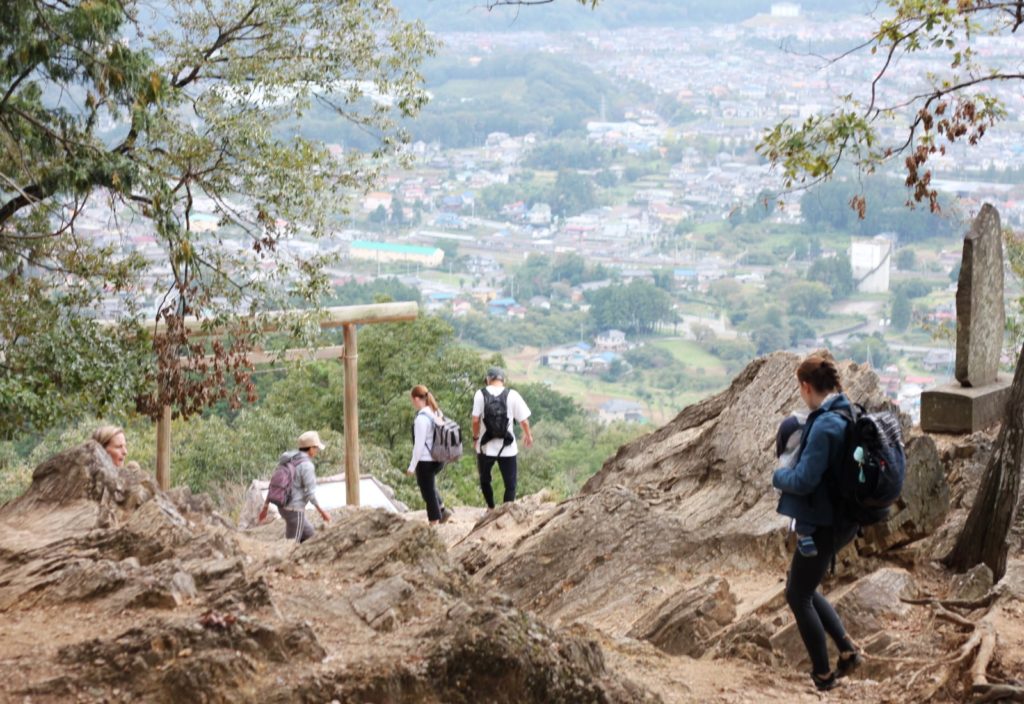
Hiking down from the summit of Mt. Hiwada.
There are plenty of hiking trails, too! At only 305m Mt. Hiwada is an easy 5.7km two-hour return climb with superb views. The trailhead is just up the road if you follow the signs for Koma Jinja—take the turn just by Alishan Organic Centre. 巾着田 (Kinchakuda; “drawstring-purse field”) is said to have been named so because from Mt. Hiwada, its shape resembles a drawstring-purse. If you pick the easier trail, then kids five years and up can do the hike—I did it with my toddler in a carrier, no problems!
We’ve Got You Covered: Savvy Insider Tips
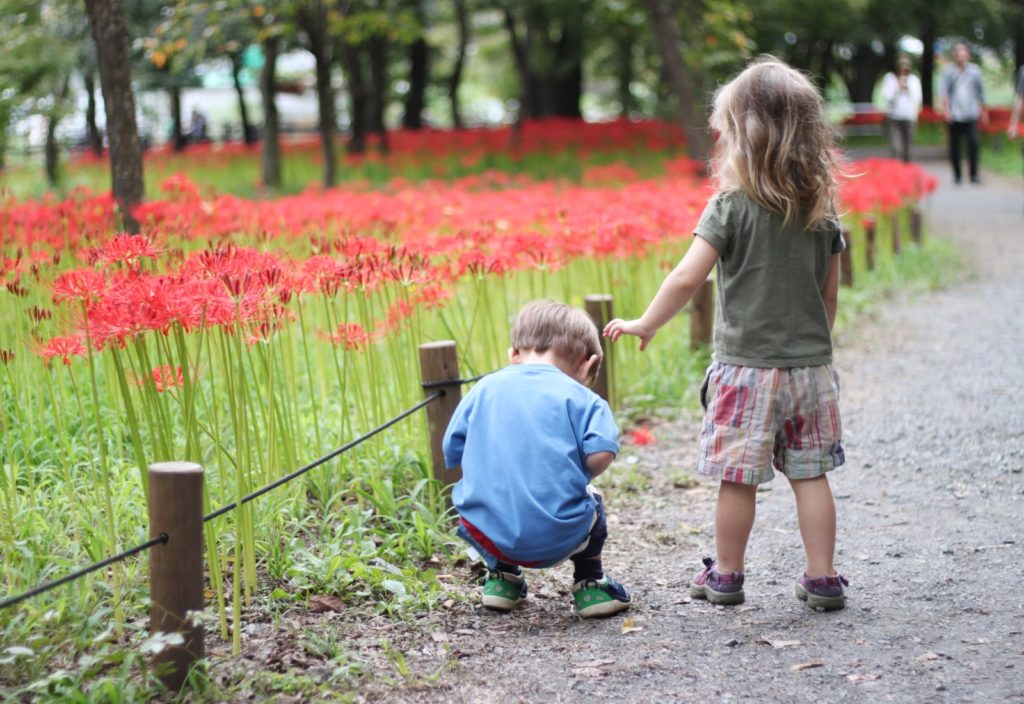
- Best time to go: For 2019, the full bloom of both fields of red spider lilies is September 21–23.
- Protect your feet: Take sturdy water shoes to protect your feet if you plan to dip in the river—sometimes glass is found on the riverbanks.
- Don’t touch: Red spider lily bulbs are poisonous if eaten, and touching the stems or petals can cause a rash. Don’t let it put you off bringing kids, though—it’s a great chance to teach children not to touch.
- If you’re driving: During the festival, traffic bottlenecks into the city, even on weekdays. If you do drive, get up early to beat the congestion, or better yet, leave the car at home and take it easy on the train.
- If you want to stay the night: There isn’t any accommodation in Hidaka City, but nearby Hanno City has lots of hotels and ryokan (Japanese-style inns).
The Deets
Kinchakuda Manjushage Festival 2019
Address: Manjushage Park, 125-2, Oaza Komahongo, Saitama Prefecture
Access: Take the Seibu Ikebukuro Line from Ikebukuro Station for 60 minutes to get to Koma Station. It’ll be a 15-minute walk from there.
When: Sep. 14-29, 9 a.m.-4:30 p.m.
Admission: ¥300. Free for junior high school and younger, and visitors with physical disabilities.
All photos were taken by the writer, Joelle Kuiper.












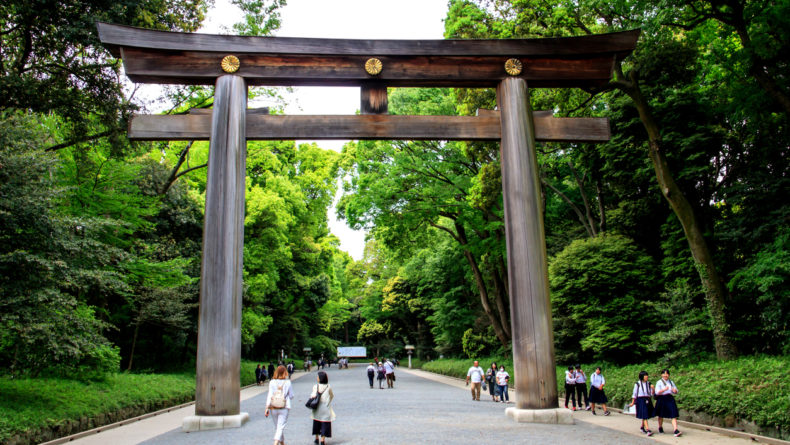
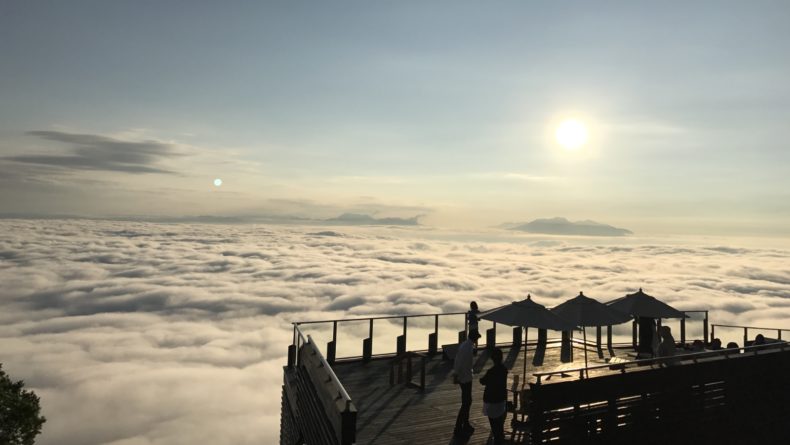
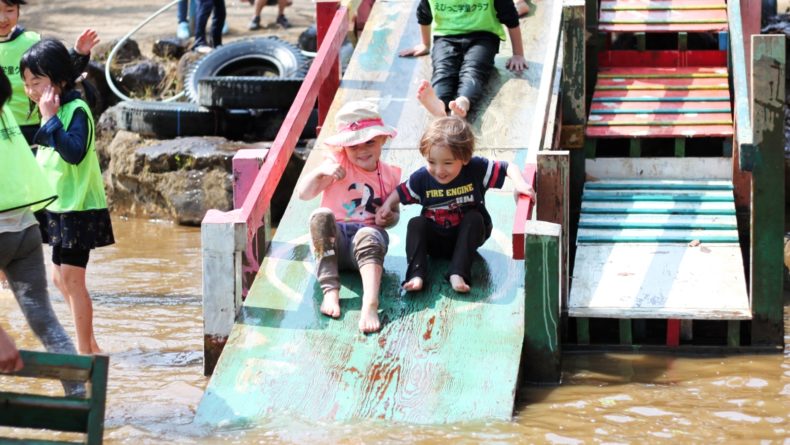
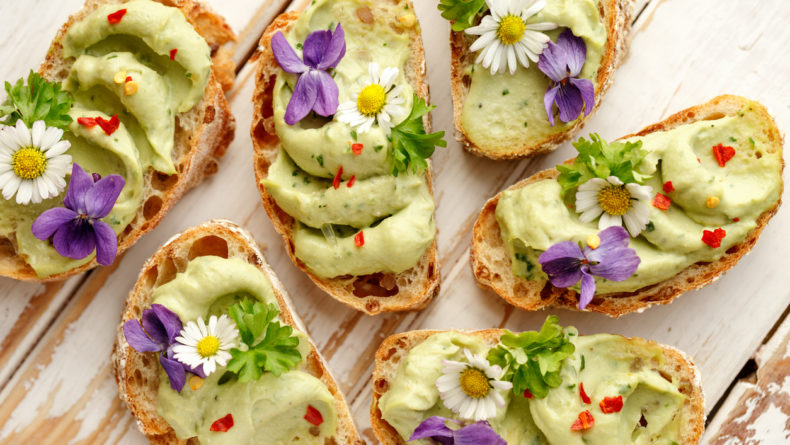
Leave a Reply